DEFENCE Indian defence procurement
Indian defence looks inwards
NEELAM MATHEWS assesses India’s drive to self-sufficiency in the defence sector.
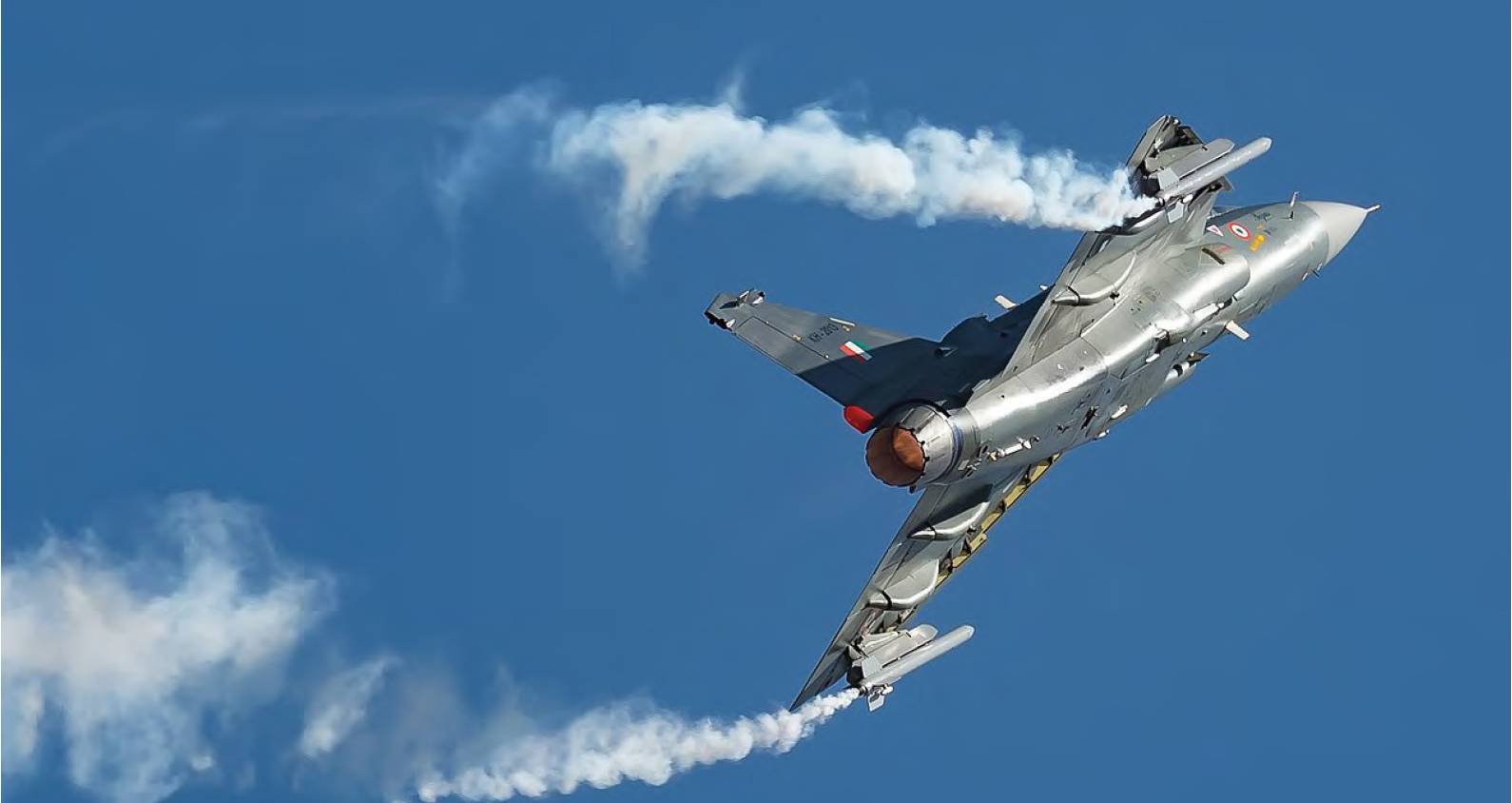 The Indian government has formally awarded state-owned company Hindustan Aeronautics Limited (HAL) a contract to produce 83 indigenously designed Tejas Light Combat Aircraft (LCA) for the Indian Air Force (IAF). Venkat mangudi
The Indian government has formally awarded state-owned company Hindustan Aeronautics Limited (HAL) a contract to produce 83 indigenously designed Tejas Light Combat Aircraft (LCA) for the Indian Air Force (IAF). Venkat mangudi
India brutal second wave of Covid in mid-May has led to its defence industry undergoing a further disruptive change – for the better. Falling cash reserves have resulted in tightened budgets and a slow but sure change is now a constant with a clear message that foreign procurement must be reduced. Last year, in an initiative aiming for self-reliance, the Department of Military Affairs of the Ministry of Defence released an embargo on import of 101 products beyond given timelines to boost indigenisation of defence production. A second list was released with the embargo coming into effect for some items from December 2020 with others along the way with the long-range land-attack cruise missile – banned from December 2025.
Defending India
The defence ministry has set a goal of a turnover of $25bn in defence manufacturing in the next five years that includes an export target of $5bn military hardware.
“Of key concern is the China-Pakistan collaborative approach…. If you are militarily strong, you will be diplomatically strong. We are not a military power but a military force. We need to build military capability, self reliance and optimise budget priorities,” said Lt Gen Vinod Bhatia Former Director General Military Operations (DGMO) Indian Army. The ongoing conflict between China and India in East Ladakh has resulted in some emergency procurement, though the focus on Make in India is clear.
Making defence local
The negative lists hold huge prospects for manufacturing for the Indian defence industry. The move offers encouragement of use of domestic design and development capability to meet requirements of the forces, Raman Sopory, founder of the Aerospace Defence Consultants Association of India told AEROSPACE. This community of startups and small and medium enterprises (SME) has played a major role during the pandemic to encourage defence companies to adopt next-gen technologies while also contributing to medical equipment in short supply. For instance, ADCAI members added to the manufacturing base for oxygen concentrators, ventilators and masks.
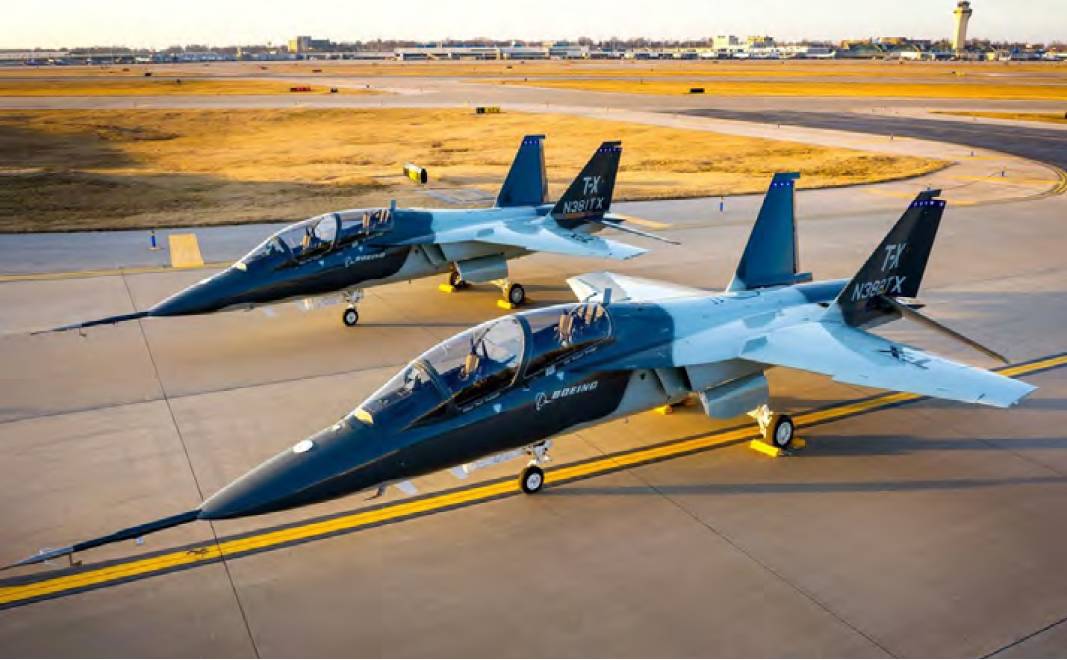 Indian industry is now supplying tools for fatigue and static testing of Boeing-Saab T-7A Red Tail advanced trainer. Boeing Defense
Indian industry is now supplying tools for fatigue and static testing of Boeing-Saab T-7A Red Tail advanced trainer. Boeing Defense
With the Defence Acquisition Procedure 2020 (DAP 2020), mandating larger companies like the Tata Group and Larsen and Toubro to have a 60% indigenised content and opening sourcing to SMEs: “We are starting to become a part of the Indian and global OEMs supply chain,” said Sopory. However, policies needed to be more transparent, he said. In addition, indigenous projects like the Light Combat Aircraft and its variants will need an Indian industry – large and small – to source its parts.
A recent IAF order for 83 light combat aircraft (LCA) will provide a big boost for the local manufactures. Delivery will take place within ten years, starting 36 months of contract signing. In February Rajnath Singh, Defence Minister inaugurated HAL’s second LCA plant in Bengaluru, which will double production capacity to 16 aircraft a year. HAL already has around 600 suppliers with the first front fuselage for the full operational capability (FOC) version built by Bengaluru-based Dynamatic Technologies.
Amit Cowshish former Financial Advisor (Acquisition), Indian MoD calls the embargo on import a ‘forcible indigenisation’. In a comment he explained that the MoD would have little option but to waive the embargo “if an indigenously designed and manufactured equipment/platform conforming to the SQRs was not available” by the timeline set for it. Abhishek Verma Partner Aerospace & Defence Practice KPMG India, said around 70-80% of equipment on the negative list is either already being made in India or on its final legs towards completion. “Besides, the new DAP2020 has opened up foreign investment in India and encourages partnerships between present OEMs and the Indian industry.” Verma said the Indian aerospace defence sector had grown during the pandemic specifically in the area of components, sub systems and radars.
Hi-tech defence collaboration
The industry is also moving up the value chain, Udayant Malouhtra, CEO Dynamatic Technologies, said at Aero India 2021. The Israeli UAV Heron is to be built by his company in collaboration with Israel’s IAI and Hindustan Aeronautics Ltd. The multi-role, long-range MALE for strategic missions, is equipped with automatic taxi-takeoff and landing systems, satellite communication for extended range, and fully redundant avionics. Dynamatic, which had been a partner with Boeing on the P-8 Poseidon and CH-47 Chinook for the past ten years, was recently contracted delivery of tools for the static and fatigue testing of the control surfaces of the Boeing-Saab T-7A Red Hawk programme, an all-new advanced pilot training system designed for the US Air Force that will train the next generation of fighter and bomber pilots.
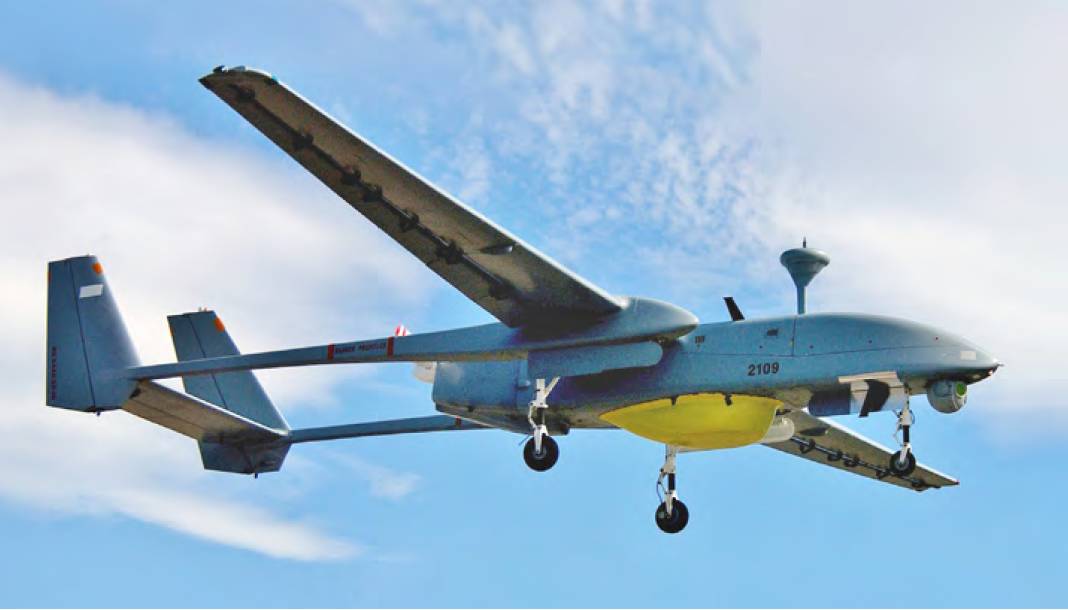 IAI Heron 1 UAV in flight. Venkat mangudi
IAI Heron 1 UAV in flight. Venkat mangudi
Another partnership in the offing is that of Tata Group having acquired intellectual property rights to the twin-engine German Grob G180 SPn which is no longer in business. It hopes to manufacture the aircraft and integrate Indian sensors and payloads. “We are now focusing on modifying the aircraft to fit special payloads so that it can undertake a demonstration of surveillance capabilities,” a senior official from the Tata Group said.
DAP-2020 emphasises the use of artificial intelligence, indigenously developed military materials, special alloys, indigenous software, engines and silicon wafers. “AI has not matured to an extent where completely autonomous missions can be executed. There are multiple applications wherein AI can be used more extensively for optimising air operations and compressing the OODA (observe-orient-decide-act) loop at the starting process in efficiency,” explained IAF Air Chief Marshal RKS Bhadauria at a recent webinar. While he said it is being developed in multiple areas in the air domain to accrue diverse and asymmetrical operations benefits, concerns needed to be addressed whether “algorithms can be trained to effectively execute mission planning behaviours in unpredictable scenarios; can machines be taught combat strategies; could sufficiently generalised representations be built to capture the richness of the planning problem itself across the threat matrix.... The answer to these questions will help us firm up our requirement specifications that will essentially be a starting document vis-à-vis the expected outcomes. If we tend to utilise AI heavily in combat aviation, we may need to redefine or even abandon certain traditional principles.”
The IAF is already looking at AI, said Bhadauria. “Having gone through some of the very important automation projects in the recent past, we have started testing AI and AI-based applications on various projects that are in different stages. We have already improved our operational efficacy by shrinking timelines. In the area of aircraft maintenance that we have substantially digitised, we have all our fleets onto the electronic maintenance management systems. Similarly, our entire inventory management system is digitised. We have already started to work on AI-based formulation to come out with predictive maintenance or predictive threat scenarios or red flags,” he added.
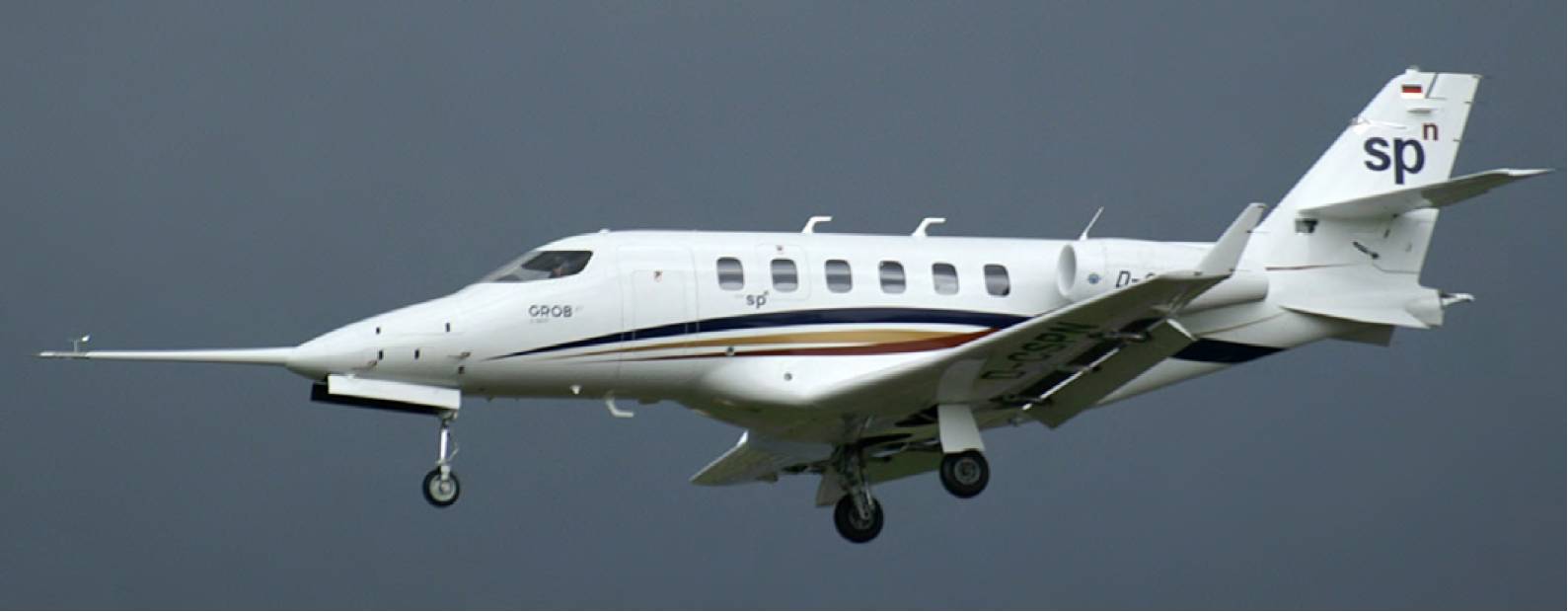 Intellectual property rights for the twin-engine German Grob G180 SPn now rests with India’s Tata Group – with the potential aim of developing it as a multi mission ISR platform for the Indian armed forces. Juergen Lehle
Intellectual property rights for the twin-engine German Grob G180 SPn now rests with India’s Tata Group – with the potential aim of developing it as a multi mission ISR platform for the Indian armed forces. Juergen Lehle
Producing drones
NewSpace Research & Technologies (NRT) space start-up is engaged in development of next-generation missions and technologies (NGM&T) towards future warfare needs of the Indian defence forces. It is undertaking research towards enhancing persistence and autonomy for unmanned vehicles and robotic swarms. In a live demonstration in late January the company demonstrated for the Indian army a swarm of 75 drones in different classes – a first globally – up to 30kg. Scout drones investigated the targets, while mothership drones released explosive-laden kamikaze units for the attacks. “The challenge is to map performing class of drones into overlapping missions, deliver operational requirements… The efficacy of effectiveness is five to ten times more using different capabilities,” said Sameer Josh, CEO NRT, to AEROSPACE. “We are developing technology that the end-user is not as yet asking for. The next few years will be focused on consolidation and “research will remain our core focus,” said Joshi.
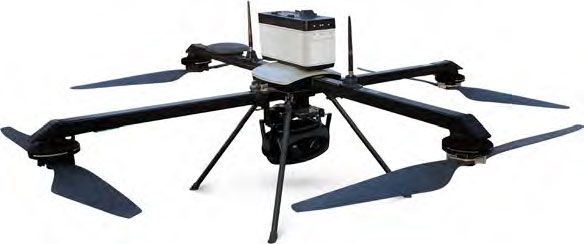 ideaForge’s SWITCH UAV. ideaForge
ideaForge’s SWITCH UAV. ideaForge
NRT’s product development portfolio includes a solar power stratospheric high altitude pseudo satellite (HAPS) unmanned platform and an air/ ground-launched stand-off ISR/hard kill autonomous system. NRT is also developing initial capability towards manned-unmanned teaming and design of an unmanned wingman UCAV vehicle.
Air Marshal Sandeep Singh, Deputy Chief of Air Staff, IAF said: “We are standing at the cusp of next level of revolution in military operations. In the coming years we will witness AI tools augmenting the human ability in planning and fighting air battles.”
In January, the Indian Army signed a $20m contract for undisclosed quantities of a high-altitude variant of startup ideaForge’s SWITCH UAV to be delivered through a year. The contract marks a strategic shift in the Indian defence procurement process as the Indian Army goes on an aggressive modernisation drive. This fixed-wing VTOL (vertical take-off and landing) Switch UAV can be deployed at high altitude and harsh environment for day and night surveillance in intelligence, surveillance and reconnaissance missions. “It is man-portable and has the highest time on target compared to any other UAV in its class,” claims the company.
3D printing
Faster design iterations, reduction in weight and flexible manufacturing will be of benefit to the Indian industry awaiting a policy to be released soon on 3D printing that will provide initiatives, including reduction on taxes. 3D printing meanwhile, is making its impact slowly but surely on civil and military maintenance repair and overhaul (MRO) services starting to synergise and gain traction. The Indian Air Force has, for the first time, released a RfP for 140 3D printed components that include development of washer flat for the Snecma M-53 aero engine for the Dassault Mirage 2000. The engine is in service with India also on the Mirage 2000-5. The IAF says it will release another RfI for 3D components soon.
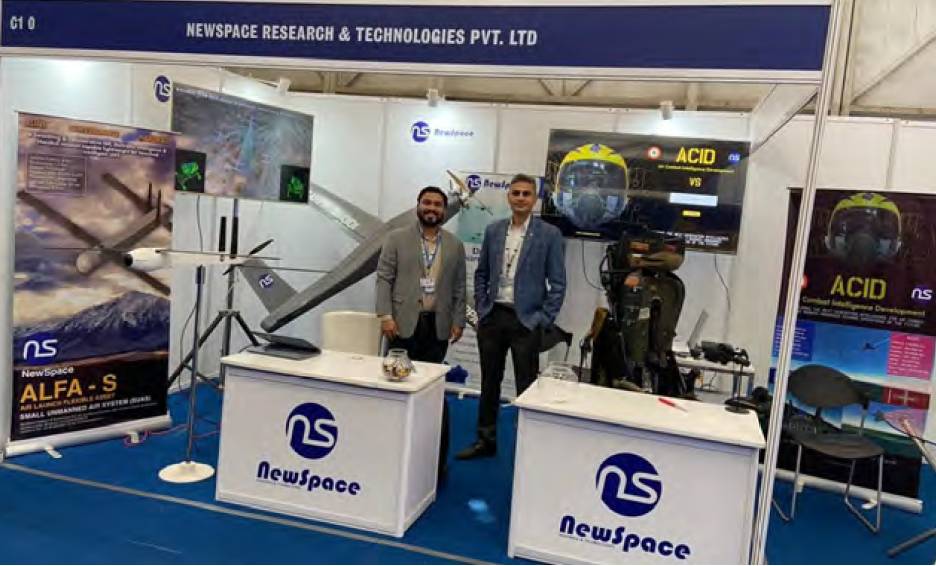 The start-up drone manufacturer NewSpace Research & Technologies (NRT). Neelam Matthews
The start-up drone manufacturer NewSpace Research & Technologies (NRT). Neelam Matthews
“IAF has taken the lead in this arena… This is a huge opportunity and boost for the industry. 3D printing can be used as huge multiplier for defence and for MRO in particular for legacy-based equipment including fighters and transporters, previously we’ve had …”, said Sopory. 3D has also been used for drones design and production by ideaForge.
An MoU signed in 2020 between Hindustan Aeronautics Ltd (HAL) and private IT giant Wipro 3D for design, development, validation, manufacture and repair of defence components using metal 3D printing technology has already taken shape. It leaves no stone upturned with validation listed as a key element. “This will provide significant manufacturing, MRO flexibility and freedom to existing, upcoming, and legacy aerospace programmes,” said Ajay Parikh, Vice President & Business Head, Wipro 3D at time of signing. In February, the two companies collaborated on a critical aero-engine component operating in the hot zone, using metal 3D printing. The nozzle guide vane (also called the inner ring), is 3D printed in a high temperature resilient steel A286, has been awarded airworthiness certification.
Another first in the arena is startup Angikul Cosmos that has recently test-fired the country’s first 3D printed rocket engine. Along with the Indian Institute of Technology, Madras, it is now building a small rocket that can launch 100kg satellites into low Earth orbit with the launch slated by the end of 2022, said the startup co-founder and CEO Srinath Ravichandran. “We used a combustion chamber, the largest in the world and printed the entire rocket engine in one shot.” Now the company is looking at building missiles using 3D.
MRO
The pandemic has left its footprint on the global industry that is turning inwards – as is in the civil-military convergence of MRO in India. Increasingly it is being recognised that it is not the job of the government to run a business. Spares of legacy Soviet and Russian aircraft are waning and India is buying a large number of western equipment, including Apaches, C-17s, P8Is, C130Js, Rafales and much more. All these need upgrades and maintenance.
Partnerships with OEMs are becoming the norm helping local businesses upgrade their processes and skills. Logistics costs are also coming down with no ferrying of aircraft half way around the world/ Confidence building is taking place as defence maintenance experts personally supervise work in Indian hangars. Boeing, as part of its defence offset regulations, has contracted private civil MRO Air Works ‘D’ checks for the 737s of the Indian Navy P8ls, and the IAF Boeing Business Jets used for VVIPs, including the Prime Minister. The interiors of the BBJs have been refurbished by US Aloft at the Indian hangar. The company is also carrying out modifications on the Mi17s. Tendering is on by Boeing to tap an Indian partner for MRO for the Chinooks and Apaches delivered to the air force. The recently opened AAR-Indamer MRO facility in Nagpur could likely prove a private sector provider to defence. US-based AAR Corp is the largest MRO in the world and brings a host of experience to India’s civil and defence MRO.
 The Indian government has formally awarded state-owned company Hindustan Aeronautics Limited (HAL) a contract to produce 83 indigenously designed Tejas Light Combat Aircraft (LCA) for the Indian Air Force (IAF). Venkat mangudi
The Indian government has formally awarded state-owned company Hindustan Aeronautics Limited (HAL) a contract to produce 83 indigenously designed Tejas Light Combat Aircraft (LCA) for the Indian Air Force (IAF). Venkat mangudi Indian industry is now supplying tools for fatigue and static testing of Boeing-Saab T-7A Red Tail advanced trainer. Boeing Defense
Indian industry is now supplying tools for fatigue and static testing of Boeing-Saab T-7A Red Tail advanced trainer. Boeing Defense


